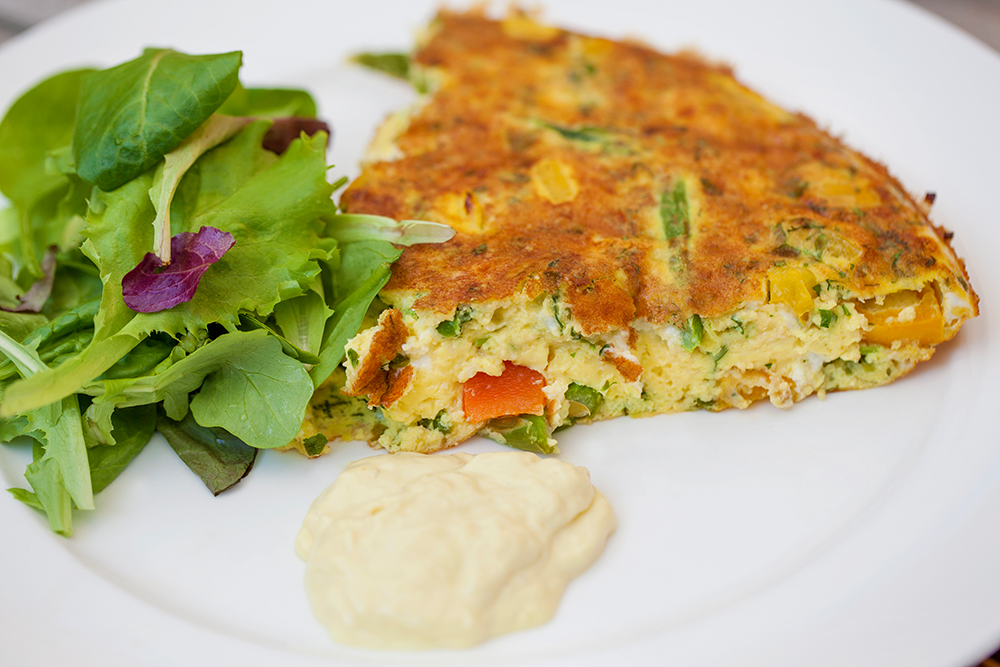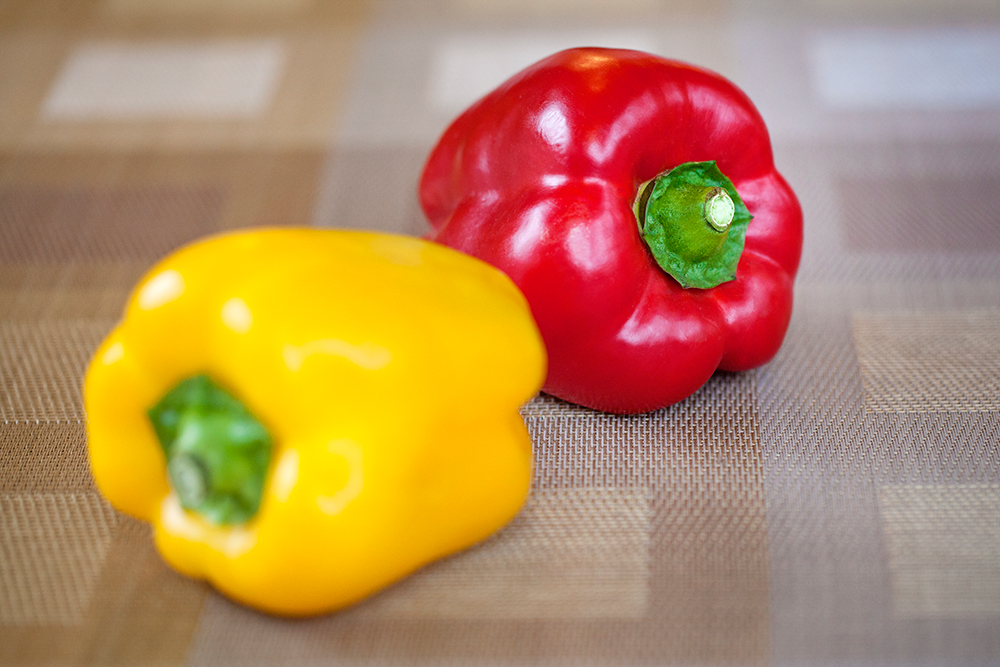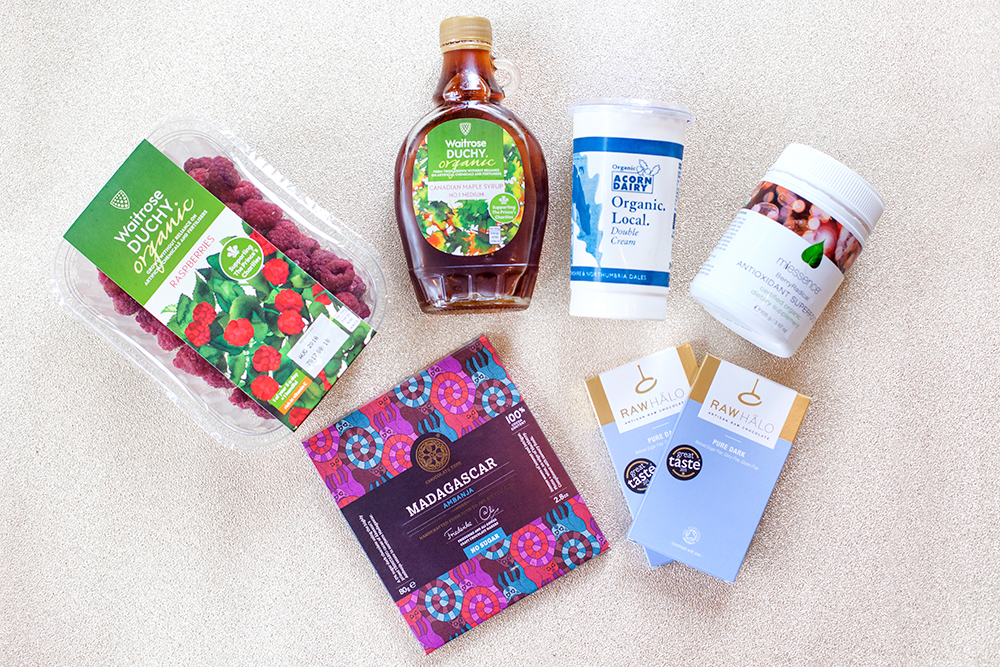What often starts out as a desire to share a simple Primal Plate recipe ends up as a lengthy essay about the advisability of eating a particular food. Today, it’s eggs. Are they good for you or not?
I’m not a nutritionist or doctor and it’s not my job to tell you what to eat but, the credence given to non-scientifically valid research that’s foundational to the current, nutritionally-poor Eatwell guide - whose “politically correct” low-fat, high-carb, low-calorie dogma is repeated over and over in advertising and the media - makes me sick! Or rather, it’ll make you sick if you don’t wise up.
For years people have been brainwashed into thinking they must avoid or limit their consumption of nature’s most nutritious foods - eggs, red meat and dairy - because they contain saturated fat and cholesterol that allegedly causes heart disease and early death.
However, the 2015 Scientific Report from the Dietary Guidelines Advisory Committee states:
“Cholesterol is not a nutrient of concern for overconsumption.”
Ergo, eat as many eggs as you want because dietary sources of cholesterol have a minimal effect on cholesterol levels in the blood!
Because cholesterol is a nutrient that’s vital to human life, our liver naturally produces cholesterol every single day. The amount of cholesterol the liver produces depends on how much you eat. If you get a lot of cholesterol from food, your liver produces less. You can’t get cholesterol from plants so if you don’t eat cholesterol-rich food (meat, eggs and dairy), your liver produces more. Does that mean the old evidence-free advice and fear mongering about dietary cholesterol was wrong? Well yes but no but. The story won’t lie down.
In March 2019, other ‘scientists’, staying loyal to the old hypothesis, reignited a fear of eggs when they warned: “Among US adults, higher consumption of dietary cholesterol or eggs was significantly associated with higher risk of incident CVD and all-cause mortality in a dose-response manner.” Meaning, the more eggs you eat, the greater the risk of heart disease and the chances of dying early.
Forwards and backwards, backwards and forwards…what’s going on? Pride, profit and prejudice…that’s what.
We’re in the midst of a fight between unethical profiteering from the public’s health and the truth. It seems that the ‘money-grabbing’ Big Boys are winning. It’s not about the public’s health, food security or saving the planet, it’s all about corporate profits and a takeover bid of the world’s food supply by the rich and powerful.
If you want the truth, you’ll have to look to yourself. Being interested in health issues doesn’t make you a conspiracy theorist, it means always being prepared to think ‘experts’ are stupid…because they often are.
Wilfully blind to the nutritional assets of animal foods, processed and packaged food manufacturers love the UK’s Eatwell guide, which unconscionably recommends that 71% of people’s daily calories should come from starch and junk foods. Of course they do. Refined sugar and starch, along with industrial vegetable oils, are a cheap and reliable food source to feed the masses. Currently 50% of the average persons diet in the UK is ultra-processed convenience foods that are increasingly composed of inconvenient toxins in brightly coloured packages that should be avoided full stop.
Flaked, puffed, sugary breakfast cereals, bleached, blanched, nutrient-stripped bread, industrial vegetable oils, meatless burgers genetically engineered to ‘bleed’ like the real thing, ‘chickenless’ Just Egg, ‘butterless’ butter… I don’t care what they call this stuff, it’s definitely not food. As long as Big Food and Big Pharma can get you to ask the wrong questions they don’t have to worry about giving you the right answers. What better way to protect their obscene profits than to ‘piggy-back’ public health advice that food and drug industry shills and government lobbyists help to create and maintain?
When people don’t investigate the facts and accept what they’re told by a supposed ‘higher authority’, there comes a point at which everything is so embedded in their minds they no longer think there’s any question of choice.
Almost 20 years ago I purchased Western A Price’s book Nutrition and Physical Degeneration - a compelling, informative read of what modern food production with its reliance on chemicals and technological fixes has got so wrong…with so many sick people as a result. Surprise, surprise! The antidote to the biggest health scam of the century is to stop eating fake food and to start eating real food in accordance with the timeless principles of healthy human diets.
Taking responsibility for your’s and your family’s health is not what the rich and powerful want you to do. Giant corporations in food and drink e.g. Kellogg’s, Pepsico, Bayer, Nestlé, Unilever, Danone (along with Google and other Goliaths of the agribusiness, food and pharmaceutical industries) are behind the EAT Lancet report - a supposedly ‘independent’ comprehensive assessment of existing science on health and sustainability - produced by 37 so called scientists, the vast majority of whom started out with a premise that favoured vegan/vegetarian diets. Aided and abetted by media-hype (because the science doesn’t cut it) they’re on a mission to transform the way we eat by inducing a global shift to plant-based diets whereby protein and fat intake will depend heavily on plant sources rather than animals. Eggs are practically non-existent. In fact, the EAT Lancet diet recommends more calories from added sugar than from beef, lamb, pork, chicken, other poultry and eggs all added together!
Unfortunately, their one-size-fits-all “Planetary health diet” is fundamentally flawed. It is both nutritionally deficient and unsustainable. The first thing that needs saying is that the current industrial farming/food production system is unsustainable, environmentally ruinous, and cruel to both animals and humans alike. The second is that all nutrients are better absorbed by the body in their animal form. As an animal lover, I’m afraid that’s just the way things are. The kindest, indeed the only realistic solution, is to sack-off factory farming and urgently re-introduce grazing animals to grasslands thereby allowing them to feed on the natural diet they evolved to eat and to replenish the soil with their waste. Grazing animals produce manure and urine that feeds the deep root systems of plants, which sequester carbon out of the air back in to the soil thus promoting its physical health and wildlife biodiversity. In summary, food security means including grazing animals that convert vegetation that we cannot eat (grass), on land we cannot farm, in to nutrient dense food for humans. At the same time, they re-fertilise the land that they feed on and help to reverse the effects of climate change. Sounds like a plan! If we don’t start to respect, nurture and protect the world’s soils today, experts predict that within the next 60 years there will be no soil left to grow food in!
Meanwhile, agrochemical and seed companies and food manufacturers want to “conquer the world” with plant-based, lab-grown meat and other ‘modern foods’. They’re relying on future ‘sustainable intensification’ made possible by a range of new technologies, which they expect to hugely benefit financially from. The goal is to persuade people that overly-processed, manufactured foods loaded with artificial ingredients will cost a lot less than animal derived foods, be more nutritious, better tasting and more convenient. FFS! Our bodies are smarter than that! We were told genetically engineered crops would “feed the world” and then the grim reality hit home. Now Monsanto/Bayer faces thousands of Round-up cancer lawsuits worldwide.
An ounce of common sense is better than any university education. Aside from liver, which let’s face it is a bit of an acquired taste, eggs are the healthiest food on the planet. Since eggs are nature's perfect food and have been valued since the beginning of time, Humpty Dumpty most certainly isn’t going to fall off the wall on my watch!
A large, whole hen egg provides excellent, high-quality protein with a perfect amino acid profile and is loaded with 13 essential vitamins, minerals and fatty acids that contribute to the health of the brain and nervous system. I think of them as a mighty multivitamin and mineral pill in a shell that are every cook’s best friend. Eggs are cheap, taste great, cook in minutes and go with just about everything.
But not just any old egg. They must be fresh, organic and truly free-range i.e. laid by happy hens in small flocks that spend most of their days outside with access to fresh grass. I’d like to keep chickens in my own back garden henhouse one day but until I learn how, I’ll continue to buy biodynamic eggs from hens that scratch and forage in rolling pastures and nearby woodlands. I’ve always had a big interest in food and firmly believe that Mother Nature knows best. Healthy food is not produced by men meddling with nature. Frankly, I’d sooner be vegan than eat industrially-produced eggs from de-beaked, fraudulently named ‘free-range’, commercial-laying hens. Warning: Sensitive souls need not click here for the horrendous cruelty involved but for those of you that still haven’t connected the dots between intensive farming and the food on your plate, please do me the courtesy!
Now we’re clear on that score, I do not ’chicken out’ on how many eggs I eat. Which not counting those I include in homemade cakes, bakes and sauces, is at least a dozen per week. Eggs are an incredibly versatile, inexpensive, nutrient-dense real food option for people eating low-carb. Because there are no ‘essential carbs’ in nature and I want my family to eat well, feel great and live long, the vast majority of Primal Plate recipes are based on ‘fat protein’ found in meat, eggs and dairy rather than ‘carb protein’ found in grains, pulses and beans. With a small amount of seasonal fruit, occasional starchy plants (e.g. tiger nuts, sweet potatoes, squash), nuts, seeds and vegetables thrown into the mix, we’re golden. No need to count calories, we eat what we love.
An omelette is delicious at any time of the day. Fill them with your choice of ingredients such as ratatouille, mushrooms, cheese or for a particular treat, strips of wild smoked salmon. Quick-to-make, soft and squidgy in the middle and tinged with gold on the outside, I’ve kept mine simple with the addition of fresh herbs stirred into the eggs before they’re cooked. One omelette will serve one person and, because it’s the ultimate fast food, it's not worth cooking a large one for two. The recipe is for a two-egg omelette, which I cook in a 15cm (6 inch) pan, ideal for one unless you are very hungry, in which case use 3 large eggs and scale up the size of your frying pan to 17cm.
To master the art of simple, get cracking.
A Classic Omelette (serves 1)
Ingredients
2 large organic, free range eggs (the fresher the better)
freshly ground organic black pepper
2 tsp finely chopped fresh flat leaf parsley
1 tsp finely chopped fresh tarragon
1 tsp finely chopped fresh chives
1 tsp finely chopped fresh coriander
15g organic ghee (or butter)
To finish - optional
Freshly grated, organic Parmesan (with a glass of wine!)
Instructions
Carefully break the eggs into a bowl and using a fork, lightly blend the egg yolks and whites together until just combined - no beating or whisking allowed!
Season with salt and pepper and add the chopped herbs.
Melt the ghee in a non-stick frying pan (ceramic please, not Teflon-coated) and let it get quite hot, then swirl it around so that the base and sides of the pan are evenly coated.
Pour the eggs into the pan, tipping the pan so that it is evenly spread then turn the heat up to its highest setting. Leave the eggs to set for approximately 10 seconds or until a delicate ‘frill’ of cooked egg appears around the outside edges.
Using a wooden spoon or non-stick spatula, gently draw the edges of the cooked egg towards the centre, tilting the pan to let the still liquid egg run into the empty space at the edges.
Keep doing this until the omelette is almost set but is still a little moist on top - it only takes around a minute. It’s now time to fold your omelette in half or thirds.
To serve the omelette folded in half, run a spatula around the edge of the pan to free the omelette, then tilt the pan over a warmed plate and slide the omelette out allowing the top half of it to flip over and cover the bottom half on the plate.
Alternatively, fold it into three as illustrated in the photos. While the omelette is still in the pan, flip one third over towards the centre, then slide it on to a warmed plate, unfolded edge first, allowing the folded part to flip over and cover the rest.
Serve and eat at once.
Notes
Served with some freshly grated Parmesan sprinkled over and a glass of wine, I guarantee that even the humblest omelette achieves gastronomy status.
You can lighten-up the texture of omelettes by adding 1 tablespoon of filtered water to the eggs before combining the yolks and whites.
The fresh herbs I used are simply what I had available. Fresh chervil and sorrel are good options too.
I use ghee rather than butter because it is less likely to burn at high temperatures. N.B. Making successful omelettes means cooking them on the highest heat that you dare! If you’re using butter, make sure you don’t let it brown before adding the eggs to the pan.
Filled omelettes are usually folded into three. Simply place your filling in the centre before folding into three as directed in the recipe instructions above.
Fat 51g Protein 48g Carbohydrate 1g - per 2 egg herb omelette






































































